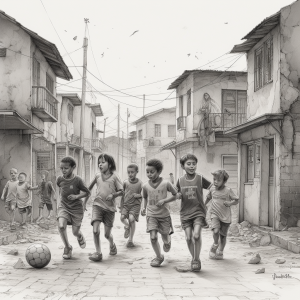Soccer training should be structured and based around the age of your players, the abilities of your players and the stage of your soccer season. Factors like facilities and the weather also play a part in determining your training session. Although certain factors may alter your sessions, the generic formula is the same all over the world.
The generic formula used for soccer is simple, it involves
- The introduction and the warm up. The coach should spend a little time with his team and outline the goals of the training session. What are you looking to gain out of the session? What aspects of the game will you be working on? What technical areas of your team need improving and so on?
- Core aspects, training drills, working on the fundamentals of the game through heavy loads and high intensity training.
- Warming down and assessment.
It’s been established and proven that warm ups are a crucial part of any training. Many consider the purpose of the warm up is to prepare the body for physical exertion. I strongly agree with this but many tend to over look that warm ups are also a period of psychological preparation. Players need time to focus and prepare themselves mentally for the physical battle that stands before them. The warm up session also allows the players to familiarize themselves with the facilities and the playing surface and if needed, enough time to make the required adjustments or changes.
Warming up allows each player to take all psychological and physiological processes from a level of rest, gradually increasing to the level of performance. The warm up process also helps reduce the risk of injury by preparing the body with a general increase in working loads.
The level of intensity of the training session determines the extent to which all physiological systems have to be activated during the warm up. Therefore the extent and intensity of a warm up is also dependent on the training session itself, player’s age group, fitness and climate (temperature). Let’s use an example; during Winter, the cold weather needs to be overcome and more time should be allocated to warming up to allow each individual player to reach the required levels of intensity. Also more time should be allocated to stretching because the body tends to stiffen up during those cold nights. Time, patience and common sense play a big part in a good warm up session. Try and use all 3.
So let’s quickly recap, the intensity of a warming up session depends on the intensity with which the players will ultimately have to work. Warming up for a game is therefore usually more intensive than for a training session. We’ve also established that the extent and intensity of a warm up also depends on a number of other factors including weather.
So what makes a good warm up session? How do you know when all players are warmed up?
A good warming up session can be modified into 3 different phases.
Phase 1
Spend the first 5-10 minutes warming up simply by jogging. Sudden acceleration or changes of pace should be avoided within the first 10 minutes. Scientific research has proven that muscles perform better as they become warmer. Jogging slowly is the simplest method known to warm up the muscles, so spend the first 10 minutes jogging. Remember what we spoke about, time, patience and common sense. Ease into your training sessions through the correct warming up procedures.
By jogging first, the temperature of the working muscles rises. This higher temperature has a positive influence on the elasticity and viscosity of the muscle fibers which will allow your muscles to stretch and withstand the heavier work loads later on in the session.
The benefits of Phase 1 are
- a rise in muscle temperature reduces the resistance of muscles which allows for greater motion and co-ordination.
- the heat produced by the body also improves the conductivity of the nerves therefore signals from the brain are carried faster to the required muscles.
- distribution of blood to the areas where the body requires them the most.
- and the uptake of oxygen by the muscles from the blood.
Phase 2
This phase is designed to loosen up the muscles. The range of movements should not be too big. Short static stretches should dominate this phase. The aim of this phase is to increase the freedom of movement of the joints and the muscles. Players should be given enough time to stretch and increase their flexibility before the next phase. Remember, it’s essential that the players don’t cool down before phase 3. Phase 2 if done correctly shouldn’t take more than 10-15 minutes.
Phase 3
This is the final phase of the warm up. This phase is used to apply the finishing touches on your players. This phase relies heavily on player feedback. Ask your players how they feel before commencing the training session. Is everybody warmed up? Does anyone need more time? Does anyone feel tight or sore? The intensity of this phase is greater than both 1&2 and the movements are identical to the core training session you have mapped out for your players. Phase 3 shouldn’t take more than 10-15 minutes. Once this phase has been completed, let your players get a quick drink in readiness for training. By now your players should be sweating and fully stretched for battle.
Core Training/ Learning-Practice
This stage of training relies heavily on the coach. The coach decides which basic techniques, skills and tactics need to be trained. This phase of training usually involves repetition and is structured around specific soccer drills. Drills like passing, crossing and shooting just to name a few. The purpose of this stage is to learn and practice some of the fundamentals of the game. Since learning is involved, the intensity level is not that high, but it’s greater than the warm up phase.
Core Training/ The Battle
This is the heart and soul of the session. This is where the players can practice the techniques, skills and tactics learnt in the previous phase. The only difference here is that the drills or small games are conducted at full intensity. These drills/games must be carried out with constant changes of pace to try and replicate match conditions. It’s also important that this phase has a competitive element to it to ensure high levels of intensity and various amounts of pressure just like on match day.
Warming Down
Warming down is not a familiar concept and one that is often overlooked. How many teams do you witness warming down after a match or training? The advantages of warming down is that the body can gradually return to it’s “at rest state”. The waste substances such as your lactic acid build up can be disposed of by carrying out gentle running exercises for 10-15 minutes. If the players don’t cool down and suddenly stop, the disposal of these wastes proceeds much slower. Therefore the time needed for recovery becomes significantly longer.
Now that you know the basic principles of training, (warm up, core loading and warm downs), make sure you as the coach provide as much variation as possible within this framework. The framework of soccer training is flexible and allows the coach to add his ideas and tactics.
By following this training framework 2 things will happen,
- You’ll spend the off season polishing all your trophies.
- Or, you’ll be picked up to coach a bigger club.
Nice problem to have as a coach, don’t you think?



Leave a Reply